HTC Vive Pro vs Oculus Rift – Which VR System is Best?
The HTC Vive Pro and the Oculus Rift are both excellent virtual reality systems. They have nearly identical features and performance, but you’ll want to pay particular attention to the design before making a decision.
Main Differences Between HTC Vive Pro vs Oculus Rift
The main differences between HTC Vive Pro vs Oculus Rift are:
- HTC Vive Pro has enhanced graphics and incredibly lifelike display, whereas Oculus Rift does not.
- HTC Vive Pro is expensive, whereas Oculus Rift is an affordable virtual reality system that offers great value.
- HTC Vive Pro is lighter, whereas Oculus Rift is a bit heavy after being worn for a few hours.
- HTC Vive Pro offers top of the line technology, whereas Oculus Rift is middle of the road.
HTC Vive Pro
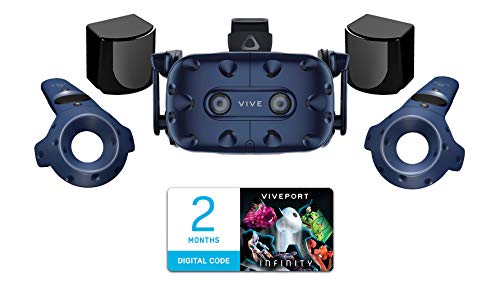
The HTC Vive has a unique design that won’t appeal to everyone. Just like it’s the first iteration, the HTC Vive, It’s futuristic and gamer-like. However, the technology is excellent and the experience is beyond that of many other virtual reality headsets. Of course, the price reflects that, too.
Design
The HTC Vive Pro’s design has a gamer written all over it. Instead of going for the understated look, it stands out in the crowd. With indentions that look like strategically placed hail damage, it’s hard to understand why you’d make something look so weird on purpose.
Does the performance make up for such an unusual design? More on that later.
The right side of the headset features a dial to change lens distance. On the left, there’s a button that you can use to toggle between different interfaces. At the centre, there’s a large camera and an HTC logo.
Behind the logo is where you’ll find the cables to connect the headband display to the PC. There’s also a cable to connect the earbuds that come with the Vive or your own pair.
On each side of the headset, you’ll find pivoting joints that secure the sidebands. Each joint is marked with Vive branding. These bands are adjustable with Velcro. They’re wide, but they’re not as long as the straps on the Rift, so they leave less room for comfort.
However, if you wear them correctly, you can wear it comfortably for a few hours and not feel too many ill effects. The only problem you have to contend with after getting it on is that the cord is a bit too short and you have to fight to get enough slack for free movement.
Room tracking
Room tracking is a lot different on the Vive Pro than it is on the Rift. This virtual reality is actually realistic. You can walk around and interact with the environment. In order to do that, you have to set up base stations.
These base stations emit infrared light that detects photo-sensors on your headset and in your controllers. It knows where you are so it can adapt your display accordingly. It also keeps you from running into things using Valve Chaperone software.
Just map out your room and it will warn you with a green grid when you get close to stepping on anything so you don’t end up going viral for the wrong reasons.
While these software components work well together in theory, you have to have a PC with the right specifications and a room big enough to accommodate freedom of movement in virtual reality.
To give yourself more room, you can mount your base stations to the wall, but they also come with tripod screw mounts on the bottom so you can stand them up on the floor wherever you need them.
As with a lot of other virtual reality devices, you have to make sure everything has a power source because you’re wired the entire time you play. There’s not much you can do to get around this problem with the HTC Vive Pro.
Setup
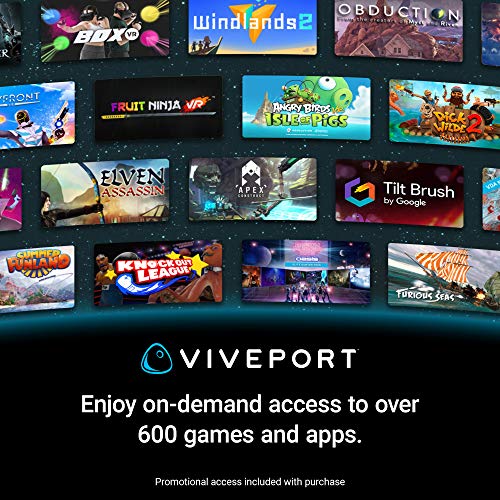
Aside from physical set up, you also have to install the Vive Pro setup software on your PC. It provides instructions that will guide you through the entire process.
When the installation is complete, you can measure your room setup and let the base stations scan the room for obstacles.
Next, you need to put the controllers on the floor for calibration. Finally, you can draw your prospective space and the software will evaluate whether you have enough room or not.
If you don’t have a room big enough, the HTC Vive Pro allows you to configure your headset for standing only.
Controllers
The HTC Vive Pro has it’s own custom controllers that enhance your gameplay. There are embedded emitters in the controllers and the base stations so you enjoy seamless tracking that comes in handy for games where precision and detail are required.
The design of the controllers is weird and clunky at first, but if you’re used to the original Vive, they may be familiar. It’s not like any other gaming controller you’re used to. However, they are slimmer than the original and there are plenty of triggers, trackpads, and buttons that offer meaningful interactions.
For games that require a traditional controller, the Xbox One controllers are compatible.
Apps
There are 28 games accessible via the Valve software and most are exclusive to the Vive, so you won’t find them anywhere else. A few are also available on the Gear and Rift VR.
There are apps available for more than just gaming, too. You can sculpt or draw with TiltBrush or create your own virtual world with ScultrVR.
Performance
The Vive Pro allows you to toggle between three different interfaces: Desktop, Steam, and Vive. You can use the SteamVR for most of your time, and if you’ve spent any time using the Big Picture interface from Steam, you’ll be familiar with the SteamVR dashboard.
This VR version of Steam is easy to navigate with large tiles for the store, library, web, chat, and community. Under these tiles, you’ll see boards for resuming play and finding friends who are playing.
Your username, avatar, and status are in the top left while mail, settings, and notifications are on the right.
The Vive Pro interface has tiles for Apps, Notifications, and Home. Apps contain all of your apps and games while Home takes you to a dashboard where you can return to the Steam interface.
The Desktop interface enables you to interact with your computer in virtual reality. It’s not incredibly useful, but it’s there if you need it.
There’s a Room View feature within the Vive that allows you to see the real world in cases where you don’t want to take the headset off to return to reality briefly. Pause your game and turn on Room View to talk to your friends or switch it on quickly to see where you are or what you’re about to step on.
You can also turn it on to pick up your phone, which syncs with the Vive Pro. You can answer calls via Bluetooth and send texts while you’re in your virtual reality.
The Steam Store is where you’ll find most of Vive’s games. There’s a large library of titles sorted by Featured, New Releases, Recently Updated, and Top Sellers. You can also browse by genre.
You can also download games on the Virtual Reality tab of your desktop. After purchasing the game, you need to download it and install it, much like on your Android phone.
Pros:
- Accurate room-tracking technology
- Smooth graphics
- Great ergonomics
- Very little latency
- Highly adaptable touch controllers
- Lots of games
Cons:
- Completely wired use
- Requires a lot of space
- Expensive
Oculus Rift
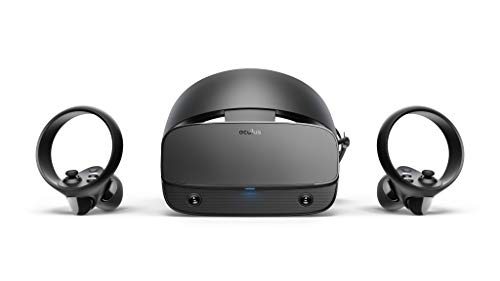
While the Oculus Rift system is a few years older, it still has plenty of features and apps. It’s still backwards compatible with older versions of Windows if you still haven’t upgraded to Windows 10, and you can still play games on those systems.
Design
The headset is remarkably sleek and elegant. It’s much different than the Vive. It also requires a wired connection to your computer, so it can be a bit counterintuitive and clunky.
While the headset doesn’t feel heavy in your hand, it’s front heavy on the visor when you put it on and leads to neck strain a bit more quickly than other units.
The foam cushions that sit against your skin are dense and comfortable. The fit is perfectly snug without being too tight, and the adjustable straps allow you to confirm it to your face for a good fit.
While it comes with a set of headphones, you can also use your own. 3D surround sound gives you incredible audio clarity, but the headphones tend to disconnect on occasion, which is inconvenient when it happens in the middle of a game. Using your own headphones can sometimes solve this issue.
The only problem with the Oculus Rift system is that many users complain of how easily they get motion sickness. This is a possibility with any virtual reality technology, but it’s especially prevalent with the Rift. It’s tough to have fun when you’re sick.
Room tracking
The Oculus Rift has what’s called Constellation technology that uses optical sensors to track emitters on your headset. This is also what supports your Touch controllers.
There’s an accelerometer, a gyroscope, and an 1200 x 1080 resolution lens for each eye. With a 90Hz refresh rate, you’ll experience very little latency.
If you upgrade to the Oculus Rift S, you’ll find much more integrated tracking technology in your headset.
Setup
The first step is downloading the Oculus software, it will walk you through the entire setup process. You’ll connect your headset and sensor to their ports, set the focus, and connect your Xbox One controller with the wireless adapter if you want to use it.
It takes about an hour to configure everything and even less if you don’t need to connect all of the external peripherals like your own controllers or headphones.
Controllers
You can use the Oculus Touch controllers for a seamless experience the way the designers intended, or you can pair your Xbox One controllers, which is a nice feature for those who have an Xbox One and are familiar with that design.
The learning curve to adapt to your VR system won’t be as steep if you use your own controllers as well as your own headphones.
If you do choose to use the Oculus Touch controllers, they fit perfectly in your hand. They’re intuitive and comfortable. Navigating menus with the Touch controllers is seamless.
Apps
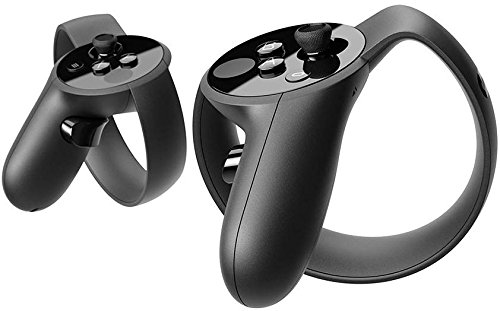
The Rift has over 30 games with a diverse library. Some are crossovers from the Gear VR and you may be familiar with them. The Oculus Rift offers better resolution than the Gear VR, so even if you’ve played them before, they’re worth a second look on a different device.
Entertainment apps give you animated shorts for a fun change of pace, and other apps like Oculus 360 Photo, Oculus Video, and Jaunt deliver content like news, movie trailers, concerts, and more.
Experience four theatre presets Home, Ant, Moon, and Movie. You also get access to Vimeo and Twitch with 360 videos from Facebook.
With the Early Access section of the store, you can play games that are still in development. The Concept section, you can view educational content like 360-degree tours of the circulatory system.
Performance
The Oculus Rift has a lot of potentials, but it doesn’t really come to life unless you have a PC with the proper specs. If you have a compatible PC, the performance is rock-solid. You won’t have screen tears, lag, or dropped frames.
The hardware is quality, tracking is sturdy, and the response time seems immediate. The game selection exceeds that of other platforms so this is a great investment for serious gamers and beginners alike. The library is updated with new things regularly.
Because of motion sickness complaints, you can set your gaming level to comfortable, moderate, or intense. Dial it back if you don’t want your stomach to churn.
Your home screen is a giant play on the word home, with a comfy living room, a couch, and a fireplace. It’s easy to switch between games and apps by returning home at any time.
The store is easy to navigate with an intuitive design. While the home screen feels cheesy, it’s a perfect way for beginners to get their feet wet in virtual reality.
Pros:
- Excellent performance
- Huge variety of games and apps
- Exceptional controllers
- Comfortable foam padding
- Intuitive controls
Cons:
- Visor feels heavy after a while
- Must have a wired connection to use
- Can induce nausea
Comparison Chart
If you’re in the market for a virtual reality system, here’s a quick comparison of the two:
| HTC Vive Pro | Oculus Rift | |
| Built-in headphones | No | No |
| Compatible with other headphones | Yes | Yes |
| Built-in audio | No | Yes |
| 3D surround sound | Yes | No |
| Room tracking | Yes | No |
| Controllers | HTC Vive | Oculus Touch |
| Compatible with other controllers | Xbox One | Xbox One |
| Resolution | 1200 x 1080 | 1280 x 1400 |
| Refresh rate | 90Hz | 90Hz |
| Weight | 1.2 pounds | 1.98 pounds |
| External sensors | Yes | Yes |
FAQs
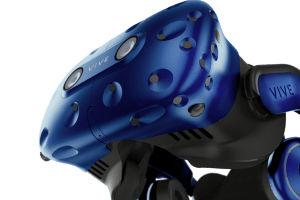
The world of virtual reality is still confusing to some, so here are some frequently asked questions to help.
The good news is that both headsets are cheaper than they were when they first came out. The bad news is, they’re still pricey. Both have great motion controls and whole-room VR right out of the box, but the Rift is the cheaper of the two, so it’s often perceived as the better value.
However, the Vive Pro has incredible graphics that make the system much more realistic than any other virtual reality system on the market.
If you want to step up from the Oculus Rift to the Oculus Quest, you’ll get a wireless connection, which is nice when you can’t see where you’re going. There are no cords to trip over. The resolution is higher, so you also experience better graphics.
Unfortunately, there aren’t as many games on the Quest and it’s slightly less powerful. As is always the case with wireless connections, it can be weak and unpredictable at times.
Not only do your Xbox One controllers work with the Oculus Rift, but you can also stream games from your Xbox One console to the Rift. Get the free streaming app from the Xbox One store and expand your library.
The Verdict
The features of the HTC Vive Pro and the Oculus Rift are nearly identical in features. Where you’ll experience the most difference is in appearance, weight, interface, and graphics. If you want a seamless experience with a Steam interface you’re already familiar with plus incredibly real visuals, the Vive Pro is a better choice.
However, if you want a great value that’s more affordable, get the Oculus Rift. The room tracking technology isn’t as great, but the Touch controllers are beyond compare. Plus, it’s by far cheaper.
Overall, the Vive Pro is better, but both are excellent VR experiences with a huge library of games and apps.
The post HTC Vive Pro vs Oculus Rift – Which VR System is Best? appeared first on All Home Robotics.

![[QILIN] - Ransomware Victim: The Michelson Organization 6 image](https://www.redpacketsecurity.com/wp-content/uploads/2024/09/image-300x300.png)
